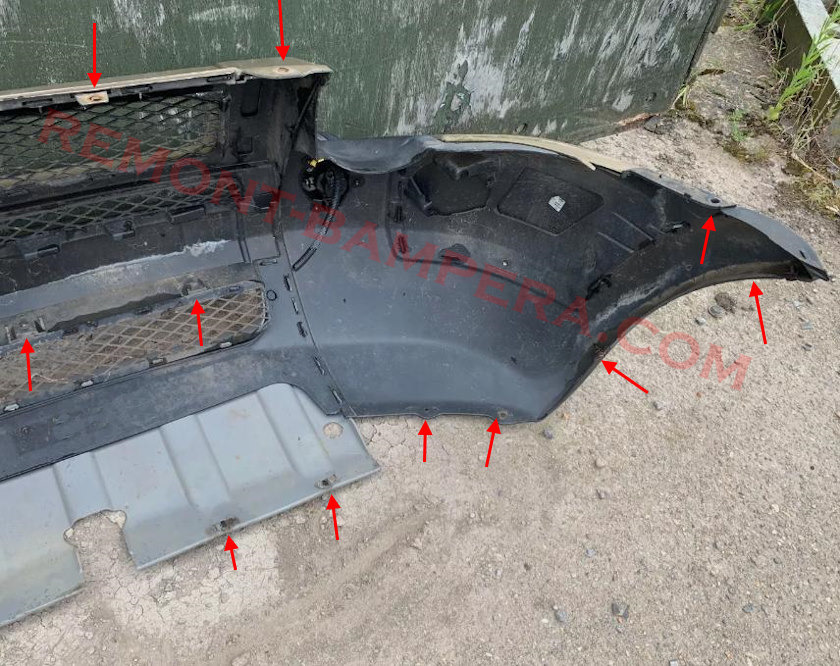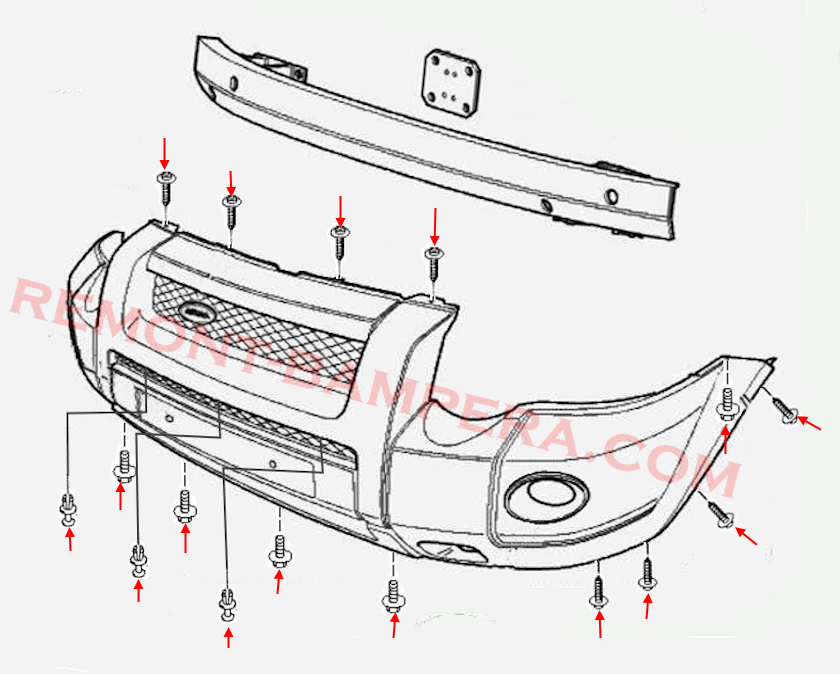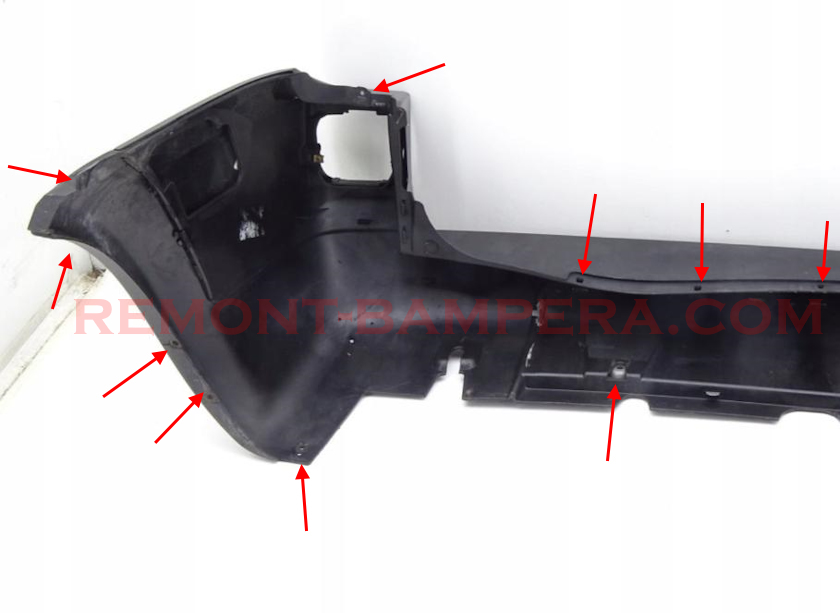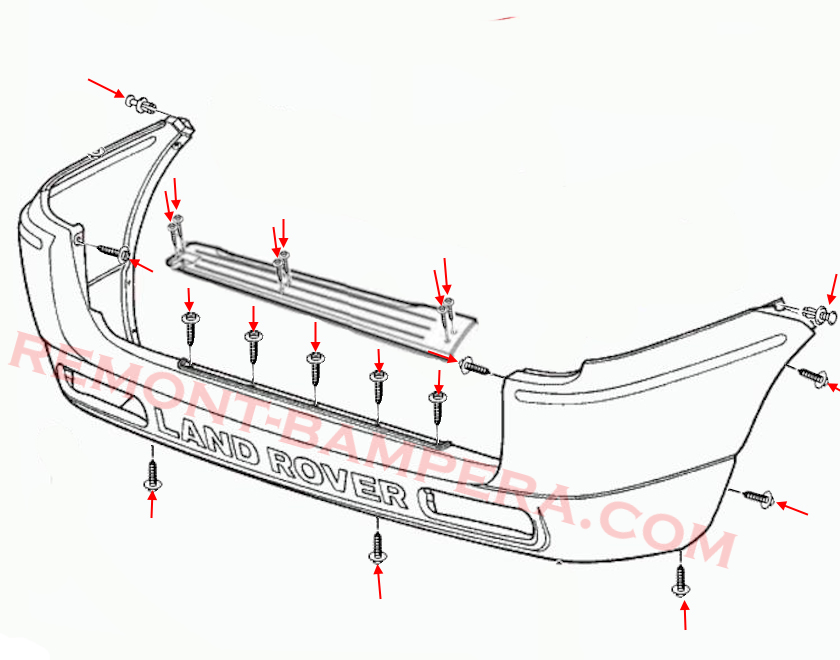Freelander I (1997-2006): How to Remove the Bumpers
The Land Rover Freelander I was the British automaker's first attempt at creating a compact and affordable SUV that combined the brand's signature spirit with the practicality of a city car. Debuted in 1997, the Freelander quickly gained popularity, becoming one of the best-selling SUVs in Europe. But behind its apparent simplicity lies an interesting history full of innovations, controversial decisions, and even some quirks.
Model and Generation Code
The Freelander I was produced from 1997 to 2006 under the factory codes L314 (for the 3-door version) and L315 (for the 5-door version). Unlike later models, the first generation did not have complex modifications—all vehicles were based on a unibody chassis with independent front suspension and a semi-independent rear suspension.
2003 Facelift
In 2003, the Freelander I underwent a noticeable facelift, though the exterior changes were minimal. The main improvements concerned the interior: an upgraded instrument panel, higher-quality trim materials, and a new multimedia system were introduced.
Technical changes included:
- New engine – The 2.5-liter gasoline V6 (177 hp) replaced the old 1.8-liter 4-cylinder, which had been criticized for its lack of power.
- Upgraded transmission – The automatic gearbox became more reliable, though the all-wheel-drive system remained its main Achilles' heel.
- Improved sound insulation – Owners of early models complained about high cabin noise levels, and Land Rover partially addressed this issue.
Despite the updates, the Freelander I retained its key feature—the Hill Descent Control (HDC) system, which debuted on this model and later became a standard feature in many SUVs.
Bumper Plastic (may vary):
- Polypropylene plus ethylene-propylene-diene terpolymer, 5% mineral filler. Marked as >PP EPDM T5<
- Polypropylene plus ethylene-propylene-diene terpolymer, 10% mineral filler. Marked as >PP EPDM T10<
How to Remove the Front Bumper
- Lift the hood.
- Unscrew the four screws (fastened top to bottom) securing the upper part of the front bumper.
- From underneath, unscrew the eight screws (fastened bottom to top) securing the lower part.
- Remove the three push-pins (inserted bottom to top) in front of the lower grille.
- Turn the wheels alternately to the left and right to access the inner part of the wheel arch.
- Inside the wheel arches, unscrew two screws on each side securing the fender liners.
- Behind the fender liners, unscrew the screws (fastened bottom to top) securing the sides to the fenders.
- Release the sides from the guide rails in the fenders.
- With an assistant, carefully pull the bumper forward (be cautious not to damage the wiring).
- Disconnect the electrical connectors for the fog lights.


How to Remove the Rear Bumper
- Open the tailgate.
- In the trunk opening, unscrew six screws and remove the trim panel.
- Under the trim panel, unscrew five screws (fastened top to bottom).
- Unscrew two screws securing the upper part of the rear bumper (these may be located under the taillights, which need to be removed, or inside the trunk opening—refer to mounting diagrams).
- From underneath, unscrew four screws (fastened bottom to top).
- Release the wheel arch extensions (rear section—pull them toward you).
- Under the wheel arch extensions, remove two push-pins securing the corners to the fenders.
- Inside the wheel arches, unscrew the screws securing the sides.
- Release the clips in the fenders.
- With an assistant, carefully pull the bumper backward (ensure wiring is not damaged).
- Disconnect the electrical connectors.



Model Description: A Urban Rebel with Off-Road Ambitions
The Freelander I was designed as an alternative to Japanese compact SUVs like the Toyota RAV4 and Honda CR-V. However, unlike them, the British SUV tried to retain Land Rover's DNA—hence its constant attempts to prove its off-road capability.
Design:
- The 3-door version (Softback or Hardback) looked sportier, while the 5-door (Station Wagon) had a family-friendly design.
- The rear door opened horizontally, which was unusual for the time.
- Exterior—typical Land Rover: short overhangs, high ground clearance, pronounced wheel arches.
Interior:
- Spacious cabin with a high roof but somewhat cramped rear seats.
- Minimalist dashboard with analog gauges.
- Early versions had issues with plastic quality, which improved after the facelift.
Technical Features:
- All-wheel drive without a low-range gearbox (only a clutch engaging the rear axle).
- Engines: 1.8i (gasoline, 120 hp), 2.5 V6 (gasoline, 177 hp), 2.0 TD4 (diesel, 112–131 hp).
- Common issues: rear differential oil leaks and viscous coupling failures.
Interesting Facts
- Almost a FWD car – The Freelander I was initially developed as a front-wheel-drive vehicle, but Land Rover's marketers insisted on AWD to maintain the brand's reputation.
- Record-breaking debut – In 1998, the Freelander set a world record by performing a backward somersault off a ramp—a stunt used in advertising to highlight the body's durability.
- Sporty version – In 2002, the Freelander SV was released with a 2.5L V6, sport suspension, and exclusive styling, but high pricing led to poor sales.
- British, but not entirely – Some components (including engines) came from Rover and BMW, causing occasional parts supply issues.
- Cult status – Despite its flaws, the Freelander I remains popular among off-road enthusiasts for its simplicity and repairability.
Conclusion
The Land Rover Freelander I is a typical representative of the era when SUVs began migrating en masse to cities. It wasn’t perfect—critics pointed out its unreliable transmission, weak performance, and mediocre build quality. But it proved that Land Rover could make more than just luxury Defenders and Range Rovers—it could also produce a compact, relatively affordable SUV. Today, the Freelander I is a classic that continues to find its fans.

 English
English  Italiano
Italiano  Français
Français  русский
русский  Deutsch
Deutsch  Español
Español